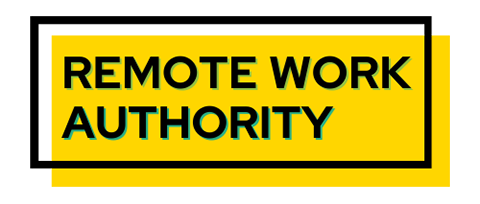Since COVID, perceptions of what work is, should be, and could be, have changed drastically. Many trendy terms like “quiet quitting” have become part of the vocabulary of work, at least temporarily, to describe the range of employee and employer feelings about work has changed.
Quiet quitting! Bare minimum Monday! Resentism! The debate over continuing remote work once it was safe to return to work after the pandemic has been rich with phrases to describe trends of worker reaction.
Raconteur, the insightful UK business website, usefully categorizes the latest jargon comprising the vocabulary of work. Some, like “quiet quitting,” may remain in common parlance, while others will not after their 15 minutes of fame. What’s significant is how many terms have been generated to describe worker concerns, disengagement, and reluctance to return to the pre-pandemic status quo.
As Rani Molla, a Vox writer, puts it, some terms “manage to be both meaningless buzzwords that elicit eye rolls and succinct ways to capture real workplace phenomena.”
Here’s the list from Raconteur of the trendy terms. While the site has a broad list of terms, many relate to the “quiet trend.” Both the employer and employee sides have contributed to the list.
8 Terms to Describe The Vocabulary of Work

1. Quiet Quitting
Doing the minimum but no more…
Employees engaged in quiet quitting might stop taking initiative, volunteering for extra tasks, and working overtime. Even if they previously went over and above to deliver results, they now do just what is necessary to keep their job.
Some quiet quitters completely disengage and find other things to do during the work day, while others just slow down. Others make a conscious decision to set boundaries. These behavior patterns can reflect burnout or an attempt to establish and maintain a better work-life balance.
2. Bare Minimum Monday
Quiet quitting on Monday for a low-key day…
A new work week can seem intimidating, so practitioners of bare minimum Monday believe that easing into the week can make them more productive throughout the rest of it. This may mean finishing up undone errands from the weekend, exercising, and doing important tasks that can easily be finished in one day. The day may involve minimal important tasks that can easily be finished in one day. The day may involve minimal meetings and phone calls.
So long as employers and team members are aware of this schedule, a bare minimum Monday can be an excellent way to avoid burnout.

3. Lazy Girl Jobs
Low-stress jobs that often pay well…
Despite the name, lazy girl jobs are an effort to achieve work-life balance. Specific jobs tend to be non-technical but well-paying; they allow people to work around childcare and other personal obligations without having to deal with the toxic corporate workplace.
Some critics brand lazy girl jobs as a type of quiet quitting. In contrast, Suzy Welch, a professor of management practice at NYU’s Stern School of Business and a senior adviser to corporations at Brunswick Group, an advisory firm, says that lazy girl job holders are saying,” I’m not going to wait for my work-life balance and postpone my joy. I don’t know that if I play by the rules, I’m going to win the game.”
4. Loud Quitting
Going out with flare…
Many workplaces have loud laborers who call attention to themselves and their contribution to the company, even when the quantity and quality of their work are mediocre. Some dissatisfied, actively disengaged workers are also quitting in a way that harms the company. Loud quitters may badmouth the boss and the company, both in-person and online, and foster discontent among coworkers.
5. Quiet Firing
Encouraging workers to quit…
Companies that want to downsize their workforce or get rid of specific employees can engage in a campaign of quiet firing to encourage people to quit. As companies usually do not have to pay unemployment when people quit, quiet firing makes it seem that people are leaving on their own. A company might withhold raises or feedback, not assign meaningful work, reassign people unwanted roles, disregard employee ideas, and not invite individuals to meetings or events.
As companies hand down return to office or RTO mandates, the terms may be so unpalatable to employees that they quit. For example, recent Amazon mandates that employees who, with full knowledge of the company, have moved out of the area must now report to hubs is often regarded as the company’s attempt to force people out.
6. Quiet Hiring
A company works with contract workers or asks current employees to do things outside their job description instead of hiring more permanent employees…
Businesses may find themselves in need of workers to fill specific jobs but are reluctant to hire new full-time employees. They may look to contractors to fill the gap or may assign full-time workers to jobs outside their usual duties. This approach is called quiet hiring.
Bringing in freelancers can keep the workload in check and give these temporary hires a short-term job, well, not committing the company to permanent employees it may not need.
Asking current employees to take on more duties can put more pressure on them but can also protect them from layoffs and open up new opportunities. Workers are within their rights to negotiate for higher pay or other benefits such as flexible work schedules or a digital PTO or leave.

7. Resentism
Staying in an unsatisfying job but resenting it…
Most companies wanted their workers to come back to the office once it was safe to do so, but many employees argued that working remotely allowed them to be productive without compromising their personal lives. Some employers agreed to allow hybrid work where workers must be in the office a few days a week, but others issued stern RTO mandates requiring workers to return to the office. Many were happy to come, at least a few days a week, but others were overcome with resentism at the prospect of returning.
Back in the office, some workers feel underappreciated and worried about the future of their jobs. They might engage in behaviors similar to quiet quitters or loud quitters.
8. Quiet Thriving
Making choices to be more engaged at work…
Quiet quitting is not beneficial for advancing in a career, nor does it benefit the company. Quiet thriving attempts to keep a work-life balance without the stress. Psychotherapist Lesley Alderman suggests “taking specific actions and making mental shifts that help you to feel more engaged on the job.”
According to Jessica Stillman, writing for Inc., some of these actions might include
- Finding a cause to believe in
- Taking an active role in shaping your job 2 make it work for you.
- Making a work friend
- Taking more short breaks
- Making an accomplishment list to remind yourself of your achievements
- Getting a hobby so you grow in other directions besides work
- Setting better boundaries.


